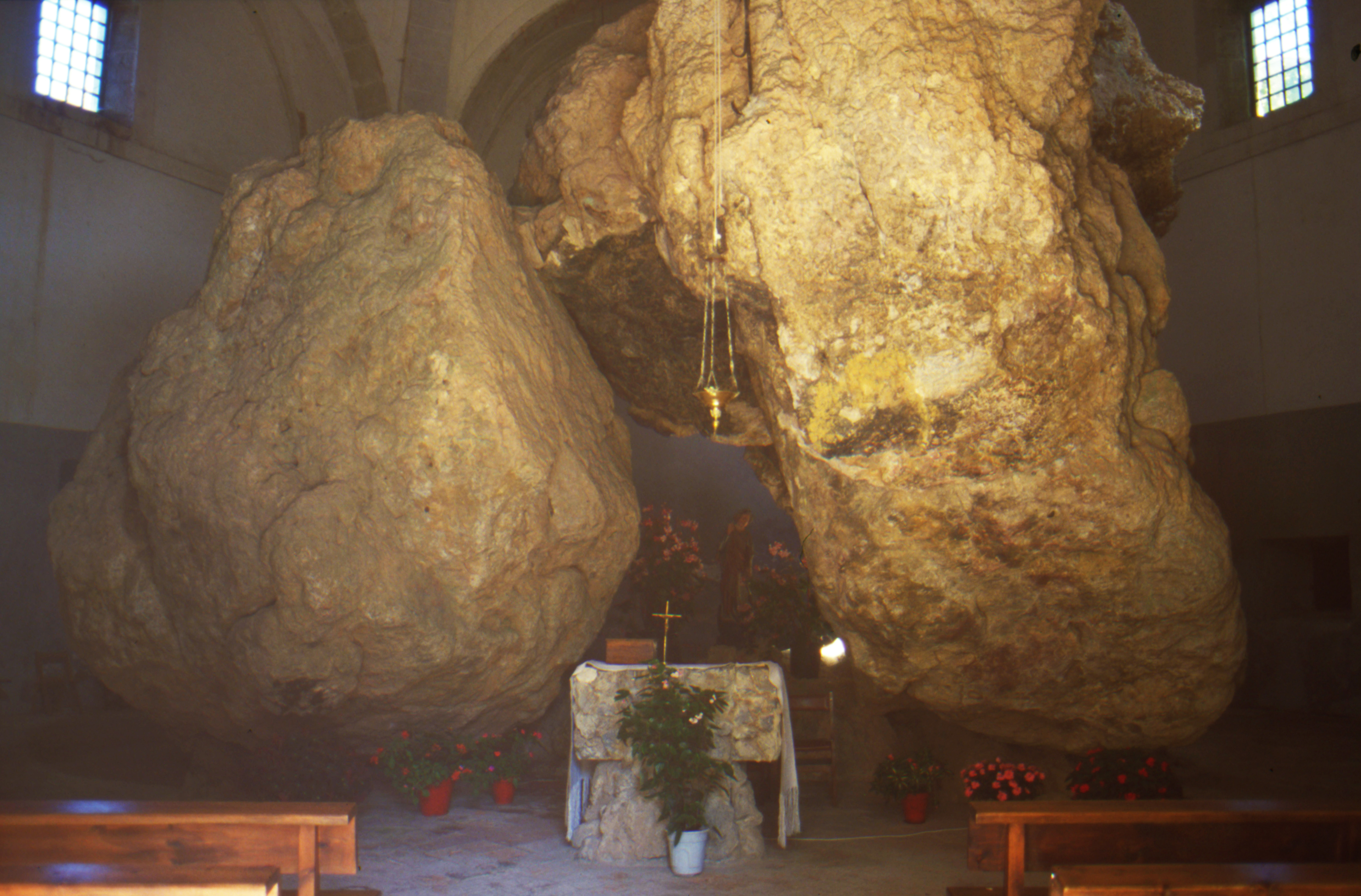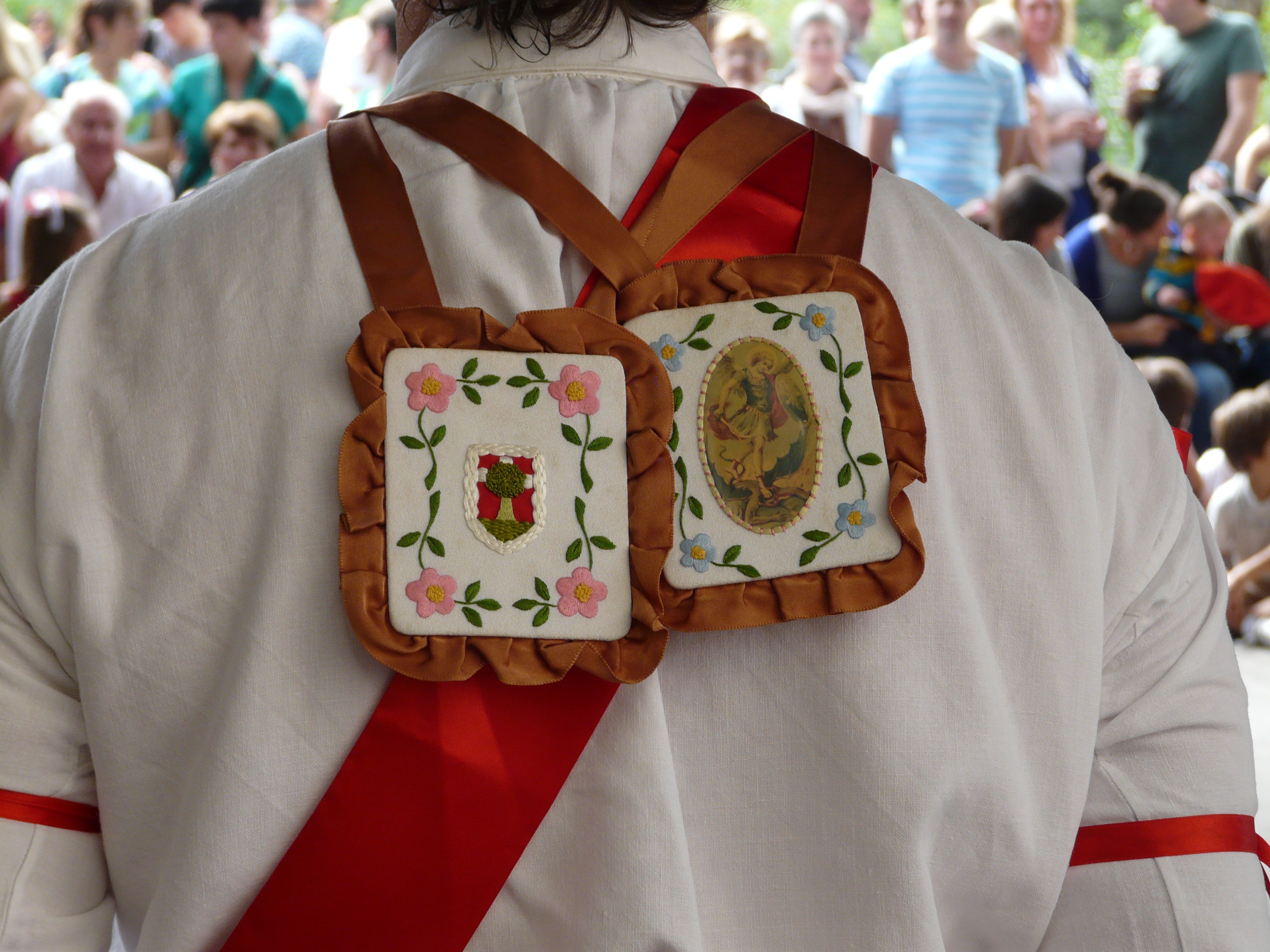Basque ethnography at a glance
Traditional dances are an essential part of our culture and testimony of our character and personality. Each region maintains its own dances, and some of them extend across regions. In Markina-Xemein two dances are performed on the feast of St Michael, 29 September: the Xemein sword dance and the Mahaiganekoa dance.

Interior view of the hermitage of Arretxinaga. José Ignacio García Muñoz. Labayru Fundazioa Photographic Archive.
Mass is celebrated in honour of the patron saint at the hermitage of Arretxinaga. A peculiar monument made of three stones supporting one another stands in its interior. The image of the saint stands right in the middle. Whoever is looking for a partner, it is said, should make three turns around the stones walking through the space between them.
Locals and visitors meet in the old town hall square after mass to enjoy the Ezpata-dantza or sword dance of Xemein. It is a ceremonial dance reserved for special occasions. In the old days it was executed on the feast of the Corpus Christi.
The number of dancers is variable, although it is usually fifteen of them that take part: the captain or maisu-zarra, four dancers with short swords and ten dancers with long swords. They dress in red and white and wear scapulars of Saint Michael the Archangel and the Xemein coat of arms. A brown flowered waistcoat distinguishes the captain from the rest. During the performance the dancers shape a singular image as they raise the captain upon their swords.
At midnight a second round of dancing takes place in this very square. The Aurresku soloist dance and a chain dance called Soka-dantza are interpreted first. A table dance known as Mahaiganekoa follows. A table, a seat, a jar of wine, a glass and a lantern are arranged in the middle of the square. The members of the Zerutxu dance group walk around the hermitage before taking to the square. Him who plays the role of the mayor leads the group. He wears a cape and holds a burning ember.
Back in the square, and guided by the sound of the txistu, one of the dancers stands on the table and drinks a glass of wine. The members of the group sing the tune of Horra hor goiko (See up there) while he dances. A second dancer climbs to the table and both men dance together. Next the second dancer drinks a glass of wine and continues dancing. All male dancers stand on the table and dance in turns. A chain dance brings the event to a close.
Akaitze Kamiruaga – Popular Cultural Heritage Department – Labayru Fundazioa
Translated by Jaione Bilbao – Language Department – Labayru Fundazioa
Video of the Mahaiganekoa table dance by Akaitze Kamiruaga. Labayru Fundazioa Archive.
Further information at www.urtesasoiak.com.



